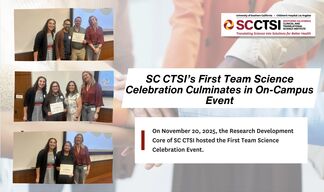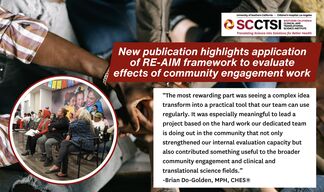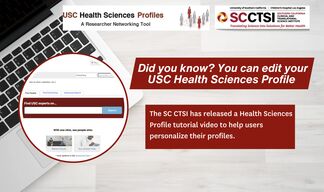SC CTSI Statistician Helps Reveal Key Biomechanical Factors in Elbow Pitching Injuries
Research collaborators analyzed variables that can lead to elbow injuries to inform strategies to prevent and treat them
A baseball pitcher uses a complex motion that produces extraordinary stress on the ulnar collateral ligament (UCL), a slender band of elbow tissue. Extreme elbow force know as torque can contribute to UCL injuries, a common and often career-threatening issue for players.
“The internal rotation of the arm during a pitch is the fastest unassisted human movement ever recorded,” said Adam Barrack, MS, CSCS, a PhD candidate in the Division of Biokinesiology and Physical Therapy at the University of Southern California.
Barrack co-authored a new study of 87 NCAA Division I pitchers that uses advanced statistical techniques to identify biomechanical factors that can contribute to relatively high elbow forces (torque) and potentially UCL injuries. The study results appear in Sports Biomechanics.
Choo Phei Wee, MS, partnered in the project. She is a biostatistician with the Biostatistics, Epidemiology and Research Design (BERD) group at the Southern California Clinical and Translational Science Institute (SC CTSI).
The USC researchers measured elbow torque and ball speed as players threw five maximum-effort fastballs. The researchers analyzed how combinations of body mechanics and physical traits affected elbow force, rather than looking at individual factors in isolation. This approach provided a deeper understanding of elbow injury risk.

“Understanding pitching
mechanics requires looking at the body as a complex, interconnected system,”
Barrack added. “It’s all about how multiple body regions work together. We
examined physical capacities in strength, control, and flexibility in search of
important unique combinations of predictors of high elbow torque.”
Pitching harder can apply more force on the elbow’s UCL, but not all pitchers generate force the same way, even those with similar body types.
The researchers highlighted that strength alone does not protect the elbow. Instead, the way an athlete uses their strength and flexibility plays a crucial role in injury risk.
“It's not just about being strong, but about how effectively a pitcher uses their strength,” said co-author Lori Michener, PT, ATC, PhD, professor and clinical scholar of physical therapy and director of the Clinical Biomechanics and Orthopedic Outcomes Research Laboratory at USC.
Pitchers with more grip strength symmetry, strong core (trunk) stability and higher body weight were more likely to have higher elbow torque and thus more vulnerability to and UCL elbow injury.
By contrast, a greater strength in the dominant shoulder’s internal rotation, increased shoulder flexibility and some asymmetry in shoulder blade strength were associated with lower elbow torque and thus reduced injury risk.
These strength and flexibility traits, the study found, generally indicate a higher or lower risk of injury, depending on how combinations of body characteristics and motions work together.
Clinicians working with pitchers should “optimize flexibility, strength capacity and movement control” for pitchers, Michener said. Athletic trainers and physical therapists should also perform case-by-case evaluations to recognize these unique biomechanical characteristics.
Barrack noted that Wee was crucial in refining the study’s methodology, ensuring accuracy, and enhancing research quality. This collaboration enabled a more comprehensive and rigorous study.
Wee assisted in making sense of the relationships between different physical factors and elbow pitching injuries. In addition, she co-wrote sections of the manuscript and collaborated closely with the research team to refine their findings.
Barrack appreciates the value of working with an expert statistician.
“Choo Phei Wee gave us a unique perspective, led the data analysis, and collaborated on writing the results, which allowed me to write the paper in an educated way,” Barrack said.
For years, Michener has leveraged SC CTSI expertise to secure multiple grants. SC CTSI statisticians have participated in almost every one of her current research projects.
“These collaborations have allowed for more rigorous, comprehensive research that might not have been possible without their specialized support,” Michener added.
Michener frequently engages CTSI statisticians to develop creative research designs, demonstrate the feasibility of research hypotheses and strengthen grant applications.
“Their support helps create strong research projects,” Michener said. “By maintaining a collaborative relationship with SC CTSI and consistently producing high-quality research, you can increase your chances of obtaining future funding.”



